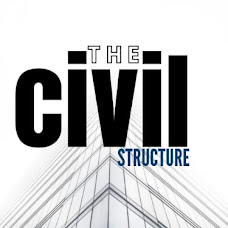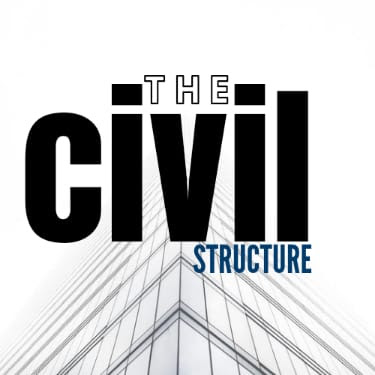STRUCTURE OF A TIMBER TREE:-
TIMBER DEFINITION :-
Timber is a type of wood which has been processed into beams and planks. It is also known as “lumber” in US and Canada. Basically, timber or Lumber is a wood or firewood of growing trees. Any wood capable of yielding a minimum dimensional size can be termed as a timber or lumber. It is a stage in the process of wood production. Timbers are used for the structural purpose. Those woods which are adapted for building purposes are timbers. Finished timber is supplied in standard sizes for the industry. Timber is used for building houses and making furniture.
CLASSIFICATION OF TREES:-
Trees are classified according to their mode of growth.
Following is the classification of trees:
1. Exogenous Trees: These trees increase in bulk by growing outwards and distinct consecutive rings are formed in the horizontal section of such a tree. These rings are known as the annual rings because one such ring is added every year and these rings are useful in predicting the age of the tree . The timber which is mostly used for engineering purposes is related to this category.
Exogenous trees are further subdivided into two groups.
(1) Conifers: They show distinct annual rings.
(2) Deciduous: They do not show distinct annual rings.
Conifers are also known as evergreen trees and leaves of these trees do not fall till new once are grown., as these trees bear cone-shaped fruits, they are named Conifers. These trees yield soft woods .
Deciduous trees are also known as broad leaf trees and leaves of these trees fall in autumn and new once appear in spring. Timber for engineering purposes is mostly derived from deciduous trees. These trees yield hard woods
2. Endogenous Trees: These trees grow inwards and fibrous mass is seen in their longitudinal sections. Timber from these trees has very limited engineering applications Examples of endogenous trees are bamboo, cane, palm, etc.
STRUCTURE OF A TIMBER TREE :-
From the visibility aspect, the structure of a tree can be divided into two categories:
(1) Macrostructure
(2) Microstructure
(1) Macrostructure:
The structure of wood visible to the naked eye or a small magnification is called the microstructure
1. Pith: The innermost central part or the core of the tree is called the pith or medulla
2. Heart Wood: The inner wood rings surrounding the pith is known as heart wood . It is usually dark in color.
It does not take active part in the growth of tree but it imparts rigidity to tree and hence. it provide strong and durable timber for various engineering purposes.
3. Sap Wood: The outer annual rings between the heart wood and cambium layer is known as sap wood . it is usually light in color and weight. It indicates recent growth and it contains sap.
It takes active part in the growth of tree and sap moves in an upward direction through it. Sap wood is also known as alburnum.
4. Cambium Layer: The thin layer of sap between sap wood and inner bark is known as cambium layer. It indicates sap which has not yet been converted into sap wood.
5. Inner Bark: It gives protection of cambium. layer from any injury.
6. Outer Bark: It Consists of cells of wood fibers and is also known as Cortex
7. Medullary Rays: The thin radial fibers extending from pith to cambium layer are known as medullary rays. The function of these rays is to hold together the annual rings of heart wood and sapwood.
( B ) Microstructure :
The structure of wood apparent only at great magnifications is called the microstructure ,
The structure of wood apparent only at great magnifications is called the microstructure ,
• Wood consists of living and dead cells of various sizes and shapes .
• A living cell consists of four parts , namely
( i ) membrane ,
(ii) protoplasm
( iii ) sap
( iv ) Core.
Cell membrane consists mainly of cellular tissue and cellulose . Protoplasm is a granular , transparent , VISCOUS , Vegetable protein composed of carbon , hydrogen , oxygen , nitrogen and sulpher. core of cell differs from protoplasm mainly by the presence of phosphorus and it is
( i ) membrane ,
(ii) protoplasm
( iii ) sap
( iv ) Core.
Cell membrane consists mainly of cellular tissue and cellulose . Protoplasm is a granular , transparent , VISCOUS , Vegetable protein composed of carbon , hydrogen , oxygen , nitrogen and sulpher. core of cell differs from protoplasm mainly by the presence of phosphorus and it is
generally oval .
Thanks you (-_-)
NOW QUIZ TIME....
@
Thanks you (-_-)
NOW QUIZ TIME....
@








1 Comments
Nice blog! Thank you for the blog. MetsaABC provides forest owners with professional forest services, which include forest management, forest harvesting, the purchase of growing forest, shrubs, wood chips and the purchase of forest properties. The sale prices of felling waste are decided before the sale, and only then the wood chips are sold and the necessary services are provided. Metsä has its own team that works for all purposes of Sale of felling waste and stacked bushes. As a reliable forest company, they keep the data of forest owners private. MetsaABC specialists always want to offer advice and strength to provide forest-related services. A forest notification is an official document that must be submitted to the Environmental Board if a forest owner wishes to perform felling work on a forest property. The forest notification can be submitted in the forest register, sent electronically filled in and digitally signed to the e-mail of the Environmental Board, submitted in person at the office of the Environmental Board or by post to the office of the Board of Environmetal.
ReplyDelete